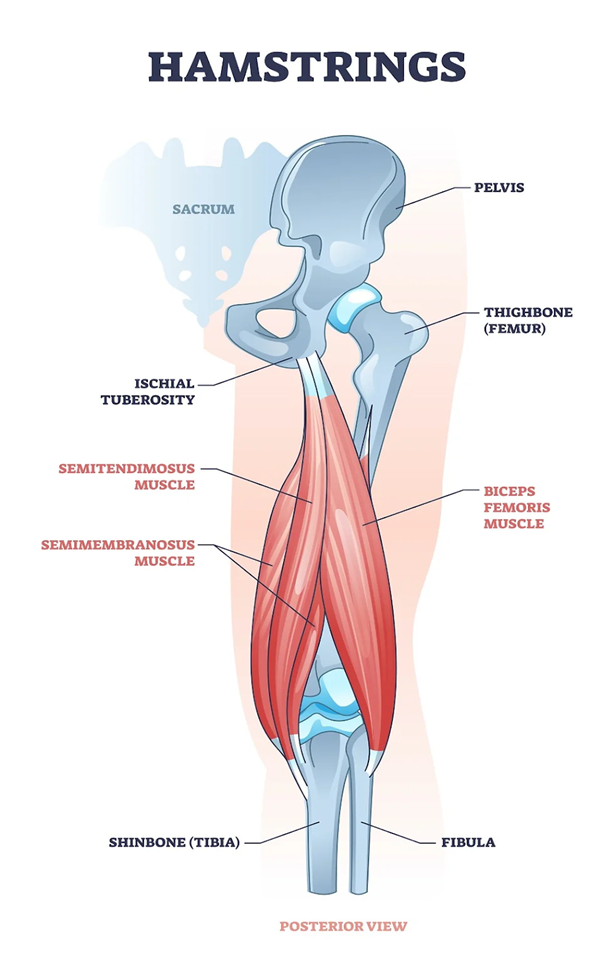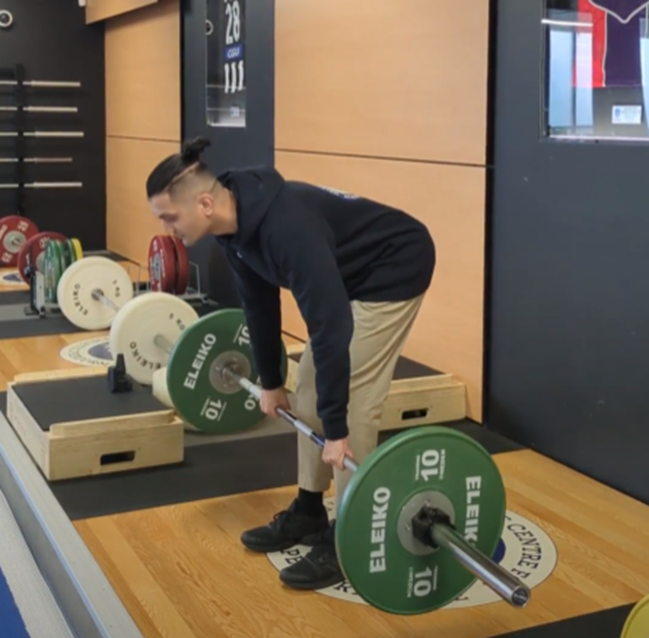Are you an athlete who has recently injured their hamstring? Are you struggling to get back into the game without feeling worried you might re-injure yourself? Fear not.
At MCAP, we understand that returning to play or sports can be a daunting experience following a hamstring injury. This article helps you understand the mechanisms behind a hamstring injury and how to equip yourself with the knowledge to prevent it from reoccurring.
UNDERSTANDING THE INJURY
Hamstring injuries are a common concern among athletes. These injuries typically occur when the hamstring muscles are stretched beyond their limits or subjected to sudden and excessive force. The severity can range from minor strains to more serious tears, affecting athletes of all levels from amateurs to professionals.
The hamstring muscle group consists of three muscles (biceps femoris, semitendinosus, and semimembranosus) located at the back of the thigh. These muscles extend the hip and flex the knee.

SIGNS AND SYMPTOMS OF A HAMSTRING INJURY
Hamstring injuries can present with various signs and symptoms, depending on the severity of the injury. Common signs and symptoms include:
1. Pain and tenderness
2. Swelling and bruising
3. Muscle weakness
4. Decreased range of motion
5. Popping/snapping sensation
6. Difficulty walking
CHALLENGES RETURNING TO SPORT
Returning to sport after a hamstring injury poses several challenges. Athletes may face physical limitations due to pain, weakness, and decreased range of motion.
There is also a risk of re-injury if the muscles have not fully healed or if rehabilitation is rushed. Psychological factors such as fear of re-injury or a loss of confidence can also hinder the return to sports process.
REHABILITATION APPROACH
The rehabilitation for hamstring injuries depends on the severity of the injury, which can alter recovery timeframes. At MCAP, we take a comprehensive approach that focuses on different phases of rehabilitation with specific goals. These phases include:
1. Acute Phase
2. Subacute Phase
3. Advance Strengthening Phase
4. Return to Sport Phase

TREATMENT STRATEGIES
Effective management of hamstring strains typically involves a combination of conservative therapies and, in severe cases, surgical intervention:
- Rest and ice: Initially to reduce pain, inflammation, and swelling.
- Compression and elevation: Aid in controlling swelling and promoting healing.
- Physiotherapy: Includes stretching, strengthening exercises, and gradual return to functional activities.
- Medications: Nonsteroidal anti-inflammatory drugs to alleviate pain and reduce inflammation.
- Biomechanical assessment: Identify and correct any factors contributing to the injury.
- Hands-on modalities: Soft tissue massage, TENS, dry needling.
CONCLUSION
At MCAP, we understand the challenges athletes face when recovering from a hamstring injury. Our expert team of physiotherapists specialises in designing personalised rehabilitation programs tailored to your specific injury and athletic goals. We combine cutting-edge technology with evidence-based practices to ensure a safe, effective, and fast return to sport.
So, are you tired of sitting on the sidelines? Ready to get back in the game stronger than before? Take the first step toward a successful return to sport. Don't let a hamstring strain hold you back any longer - let us help you reach your full potential!